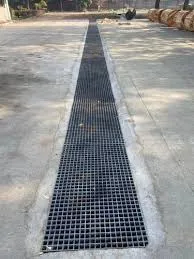
-
 Afrikaans
Afrikaans -
 Albanian
Albanian -
 Amharic
Amharic -
 Arabic
Arabic -
 Armenian
Armenian -
 Azerbaijani
Azerbaijani -
 Basque
Basque -
 Belarusian
Belarusian -
 Bengali
Bengali -
 Bosnian
Bosnian -
 Bulgarian
Bulgarian -
 Catalan
Catalan -
 Cebuano
Cebuano -
 China
China -
 China (Taiwan)
China (Taiwan) -
 Corsican
Corsican -
 Croatian
Croatian -
 Czech
Czech -
 Danish
Danish -
 Dutch
Dutch -
 English
English -
 Esperanto
Esperanto -
 Estonian
Estonian -
 Finnish
Finnish -
 French
French -
 Frisian
Frisian -
 Galician
Galician -
 Georgian
Georgian -
 German
German -
 Greek
Greek -
 Gujarati
Gujarati -
 Haitian Creole
Haitian Creole -
 hausa
hausa -
 hawaiian
hawaiian -
 Hebrew
Hebrew -
 Hindi
Hindi -
 Miao
Miao -
 Hungarian
Hungarian -
 Icelandic
Icelandic -
 igbo
igbo -
 Indonesian
Indonesian -
 irish
irish -
 Italian
Italian -
 Japanese
Japanese -
 Javanese
Javanese -
 Kannada
Kannada -
 kazakh
kazakh -
 Khmer
Khmer -
 Rwandese
Rwandese -
 Korean
Korean -
 Kurdish
Kurdish -
 Kyrgyz
Kyrgyz -
 Lao
Lao -
 Latin
Latin -
 Latvian
Latvian -
 Lithuanian
Lithuanian -
 Luxembourgish
Luxembourgish -
 Macedonian
Macedonian -
 Malgashi
Malgashi -
 Malay
Malay -
 Malayalam
Malayalam -
 Maltese
Maltese -
 Maori
Maori -
 Marathi
Marathi -
 Mongolian
Mongolian -
 Myanmar
Myanmar -
 Nepali
Nepali -
 Norwegian
Norwegian -
 Norwegian
Norwegian -
 Occitan
Occitan -
 Pashto
Pashto -
 Persian
Persian -
 Polish
Polish -
 Portuguese
Portuguese -
 Punjabi
Punjabi -
 Romanian
Romanian -
 Russian
Russian -
 Samoan
Samoan -
 Scottish Gaelic
Scottish Gaelic -
 Serbian
Serbian -
 Sesotho
Sesotho -
 Shona
Shona -
 Sindhi
Sindhi -
 Sinhala
Sinhala -
 Slovak
Slovak -
 Slovenian
Slovenian -
 Somali
Somali -
 Spanish
Spanish -
 Sundanese
Sundanese -
 Swahili
Swahili -
 Swedish
Swedish -
 Tagalog
Tagalog -
 Tajik
Tajik -
 Tamil
Tamil -
 Tatar
Tatar -
 Telugu
Telugu -
 Thai
Thai -
 Turkish
Turkish -
 Turkmen
Turkmen -
 Ukrainian
Ukrainian -
 Urdu
Urdu -
 Uighur
Uighur -
 Uzbek
Uzbek -
 Vietnamese
Vietnamese -
 Welsh
Welsh -
 Bantu
Bantu -
 Yiddish
Yiddish -
 Yoruba
Yoruba -
 Zulu
Zulu
Alternatives to Fiberglass Stack Liners for Improved Performance and Durability
Exploring Alternatives to Fiberglass Stack Liners A Comprehensive Overview
In the world of industrial applications, stack liners play a vital role in ensuring the effective operation of emission control systems. Traditionally, fiberglass stack liners have been a common choice due to their lightweight and corrosion-resistant properties. However, as industries evolve and regulations tighten, the need for alternative materials that offer similar or improved performance has become paramount. This article delves into several alternatives to fiberglass stack liners, examining their benefits and potential drawbacks.
1. Metallic Stack Liners
One prominent alternative to fiberglass stack liners is the use of metallic liners, such as stainless steel or carbon steel. These materials are highly durable and can withstand extreme temperatures and corrosive environments, making them ideal for heavy-duty applications. Stainless steel, in particular, is favored for its resistance to rust and oxidation, increasing the longevity of the stack system.
While metallic liners offer excellent durability, they can be significantly heavier than their fiberglass counterparts, potentially leading to increased installation costs and structural considerations. Additionally, the high thermal conductivity of metals can lead to heat loss, which might be a concern in certain applications.
2. Thermoplastic Liners
Thermoplastic liners, made from materials such as polyethylene or polypropylene, are another viable alternative. These materials are known for their excellent chemical resistance and flexibility, allowing them to be easily installed in various configurations. The lightweight nature of thermoplastics also makes them an attractive option for industries looking to reduce overall system weight.
However, thermoplastics have a lower tolerance to high temperatures compared to fiberglass and metals, which could limit their use in specific high-temperature applications
. Additionally, the long-term durability under constant exposure to UV radiation might be a concern, necessitating protective coatings.3. Ceramic Liners
fiberglass stack liner alternative

Ceramic liners offer a unique alternative for stack applications requiring exceptional abrasion and corrosion resistance. The hard, inert nature of ceramics makes them suitable for environments where particulate matter and high temperatures are present. In many instances, ceramic liners can outperform fiberglass in terms of durability and longevity.
On the downside, the brittleness of ceramic materials can lead to cracking if not handled appropriately during installation. Moreover, the cost of ceramic liners tends to be higher than that of fiberglass or thermoplastics, which may deter some industries from adopting this alternative.
4. Polymer Composite Liners
Emerging as a promising alternative, polymer composite liners combine the benefits of various materials to achieve enhanced performance features. These liners typically incorporate a blend of polymers reinforced with fibers, providing excellent chemical resistance, reduced weight, and improved thermal stability. The versatility in design means that composite liners can be tailored for specific applications, making them highly adaptable.
However, the manufacturing process and material costs for polymer composites can be more complex and expensive compared to traditional options, which might limit their widespread adoption.
5. Conclusion
Choosing the right stack liner material involves weighing the pros and cons of each option based on specific operational needs, environmental conditions, and budget constraints. While fiberglass stack liners have long held their ground, the emergence of alternatives such as metallic, thermoplastic, ceramic, and polymer composite liners provides industries with a range of options to suit different application requirements.
As technology advances and new materials are developed, it is essential for operators and manufacturers to stay informed about the latest developments in stack liner technologies. By assessing the unique demands of their operations, businesses can make informed decisions that not only enhance efficiency but also support environmental compliance and sustainability goals. The future of stack linings is versatile, with a multitude of alternatives ready to meet the challenges ahead.









